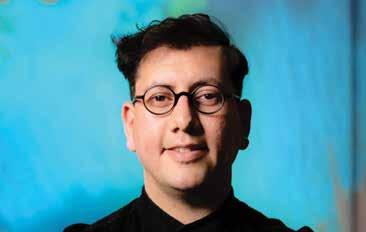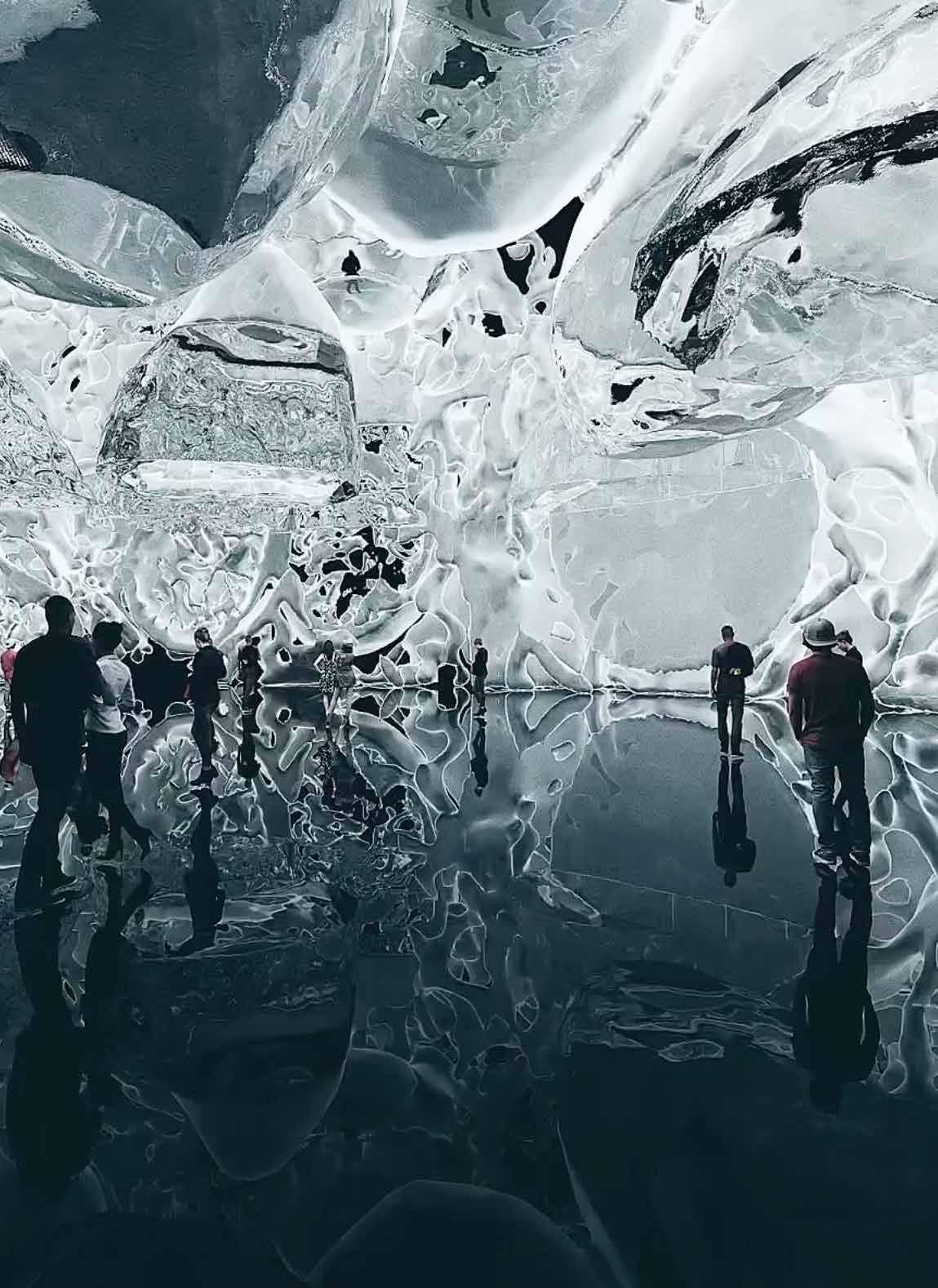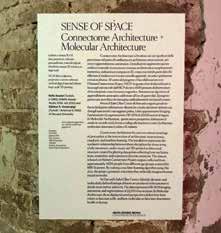
5 minute read
Gökhan S. Hotamışlıgil and Refik Anadol Collaboration
OUR COLLABORATION WITH:
REFIK ANADOL
Advertisement
Molecular Architecture is a manifestation of infinitely dynamic and molecularly defined biological forms on the nanoscopic scale at a never before achieved detail. Based on the data collected from Professor Gökhan S. Hotamışlıgil’s years-long study at Harvard University and Sabri Ülker Center on the relationship between metabolic health and certain chronic diseases such as obesity and diabetes, the augmented sculptures of Molecular Architecture emerge from the application of cutting-edge FIB-SEM imaging, segmentation of 22,035 sections collected from a 1m µ3 volume, machine learning, and 3D constructions and printing techniques. They aim to accurately represent the spectacular resolution of the inner architecture of liver cells and their biochemical and physiological constellations of healthy and unhealthy cell structures that will define the future of global human health.


Sense of Space: Connectome Architecture & Molecular Architecture
https://refikanadol.com/works/sense-of-space-molecular-architecture/
A CONVERSATION BETWEEN GÖKHAN HOTAMIŞLIGIL AND REFIK ANADOL HOW MOLECULAR BIOLOGY, ART AND TECHNOLOGY CAME TOGETHER USING BIG DATA.
Q. What is my view of the interface between science and art?
GÖKHAN: At the start of our journey, I have made the following observations. Are art and science not processes of searching for beauty and truth? Could there be science without art, or art without science? From Architect Sinan to Leonardo da Vinci, seekers of truth and beauty have been able to see the most important universal reflections at this intersection. Scientists query everything in their quest for facts yet to be discovered or observed, while artists question everything in the pursuit of beauty, which no one has seen before. With the exciting possibility and joy of seeing something new – a brand-new thing every day – they each turn a long life full of hard labor into pleasure. Both the artist and the scientist follow “a long, narrow road.” For both, what gives them the highest inspiration and satisfaction, and “the reason for staying” on this road (Quoted from Aşık Veysel), is the creativity in their work, and the hope of being able to touch another person’s life.
REFIK: At Refik Anadol Studio & Media Lab, our multidisciplinary approach to the future of humanity confronts the complex question of redefining environments and architectural spaces through AI-based digital aesthetics at the intersection of art, technology, and science. In collaboration with scientists and academics from around the world, we aim to address timely and timeless inquiries about how the human brain, and its artificial counterpart, construct realities that encourage us to redefine spaces with a new vocabulary of world-making. Our research and artwork lay at the center of both computational and representational concerns about the perception of environments contributing to this vocabulary. Our research program builds a perfect bridge between academic research and public art, as it seeks to find ways of creating awareness regarding recent scientific and technological developments.
Q. What intrigued me about a collaboration?
GÖKHAN: What intrigued me most about Refik and his team was their endless curiosity, genuine excitement about science, and kind generosity in their time and effort to enable our dreams. It’s only because of these qualities that we were able to achieve what we have so far. In the end, our interactions with Refik allowed us to both enjoy an invaluable treasure—the possibility of seeing something that no one else has seen before and sharing it with the rest of the world in the most beautiful manner.
REFIK: I was intrigued by how open-minded and enthusiastic Dr. Hotamışlıgil and his colleagues were during our discussions of the aesthetic, visual, and philosophical qualities of our collaboration. It was amazing to witness multilayered conversations unfolding around the phrase “sense of space,” while knowing we each defined and envisioned it in a different light and scale. Dr. Hotamışlıgil and his team gave us the opportunity to challenge our virtual and immersive conception of environment(s), and redirect our attention to the productive and aesthetic conflation of nano and architectural spaces.
Q. What can the public learn by experiencing our collaborations?
GÖKHAN: This collaboration illustrated the power of the interface between science and art. On our end, this effort involved many years of work involving the acquisition of large volumes of subcellular structural data from tissue samples at different states that challenge liver function. Scientists at the Sabri Ülker Center, led by Drs. Güneş Parlakgül and Ana Paula Arruda, in collaboration with Dr. Harald Hess and C. Shan Xu at the Janelia Campus of the Howard Hughes Medical Institute, implemented advanced microscopy technologies to tissue samples and generated massive amounts of molecular architectural data.
To build the most detailed 3D architectural constructions and illustrations of this data, we initiated an extremely exciting collaboration with Refik Anadol and his colleagues. His unique expertise, creative genius, and visual magic allowed us to not only build the actual subcellular molecular architecture in spectacular detail, but also provided a 3D molecular tour inside the actual subcellular architectural structures, revealing an unprecedented level of detailed information. This perspective of biological and molecular architecture and its functional reflections may not only help us discover new metaphors for adaptability in innovative design, but also approach inherent or acquired structural failures which threaten health and survival.
REFIK: Understanding architecture as a living organism in the age of big data along with advanced analytical and computational methods demands a more nuanced look into the complex relationships between the human body and the changing meaning of structure. Living things seem to possess and control tremendously rich and dynamic architectural repertoires compared to rigid architectural forms, making them more susceptible to endless permutations, randomness, disorientation, and entropy to support their ever-changing functional demands. Our exhibit on the “resolution of biological structure” explored the main theme of the 2021 Venice Architecture Biennale, “How will we live together?”, through an interdisciplinary investigation of how human vitality and unobscured anatomical spaces can help us find new metaphors for adaptability in innovative design.




